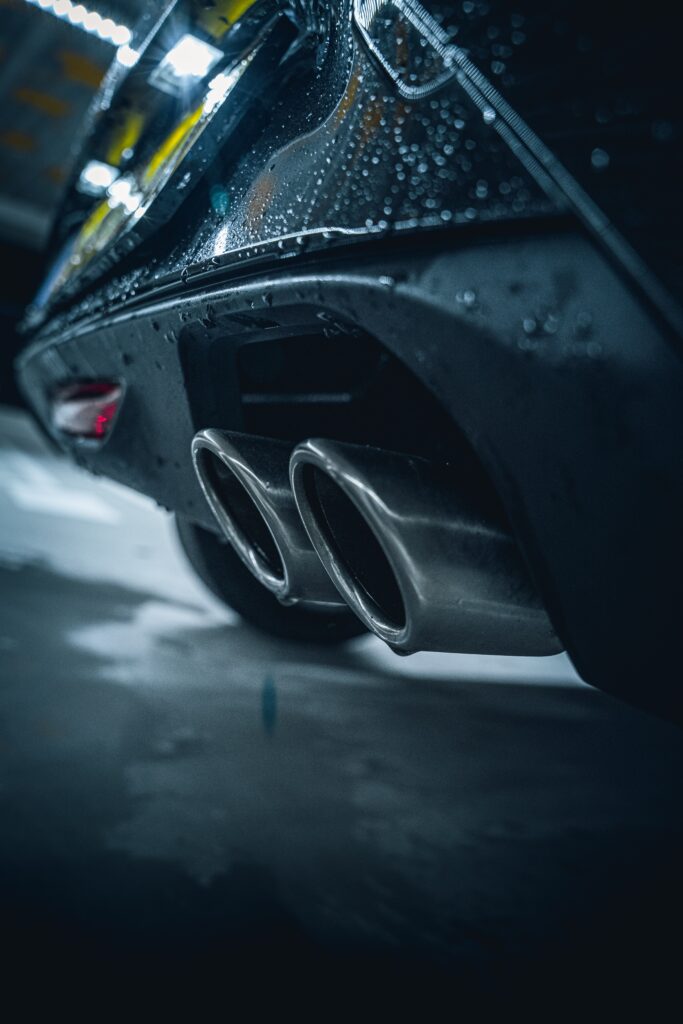Have you ever wondered what a cracked exhaust pipe sounds like? Well, let me tell you! When you start up your engine, if you happen to hear a loud hissing or popping noise coming from underneath your vehicle, it could be a sign of a cracked exhaust pipe. It’s important to pay attention to these sounds because a damaged exhaust pipe can affect the performance and efficiency of your car.
Imagine cruising down the road and hearing a constant rattle or vibration. That could also be a result of a cracked exhaust pipe. These sounds occur due to the escaping gases from the crack, creating a disturbance in the exhaust system. If you suspect your exhaust pipe might be cracked, it’s a good idea to have it inspected and repaired by a professional mechanic. Remember, taking care of small issues like this can prevent bigger problems and ensure that your car runs smoothly for years to come.

Understanding Exhaust Pipe Functionality
The role of the exhaust system in vehicles
The exhaust system plays a crucial role in the overall functionality of a vehicle. Its primary purpose is to safely remove harmful gases produced during the combustion process and direct them away from the car’s occupants. This ensures the release of carbon monoxide, nitrogen oxide, and other pollutants outside the vehicle.
The exhaust pipe is a critical component of the overall exhaust system. It connects the engine manifold to the muffler, allowing gases to flow through and exit the vehicle. Without a properly functioning exhaust pipe, harmful fumes would accumulate inside the car, posing a serious risk to your health and the environment.
Common types of exhaust pipes
Exhaust pipes come in various shapes, sizes, and materials, depending on the vehicle type and its intended use. The three most common types are:
-
Single Exit: This is the most basic and widely used type of exhaust pipe. It features a single exit point, typically located at the rear of the vehicle. Single exit pipes are commonly seen on everyday passenger cars.
-
Dual Exit: Dual exit exhaust pipes have two outlets, typically symmetrically placed on both sides of the rear bumper. This type of exhaust is often found in high-performance vehicles, as it allows for improved airflow and an aggressive aesthetic.
-
Side Exit: Unlike single and dual exit pipes, side exit exhausts have their outlets positioned on the side of the vehicle, usually near the rear wheels. This configuration is commonly seen in off-road vehicles and trucks, as it helps prevent damage from rough terrain.
Why maintaining the exhaust pipe is essential
Maintaining the exhaust pipe is crucial for several reasons. Firstly, keeping the pipe in good condition ensures the proper flow of exhaust gases, which in turn contributes to optimal engine performance. A cracked or damaged exhaust pipe can cause back pressure, reducing engine efficiency and compromising fuel economy.
Furthermore, a well-maintained exhaust pipe helps minimize noise pollution. The pipe directs exhaust gases through the muffler, which uses baffles to reduce noise. If the exhaust pipe is cracked or damaged, it can result in excessive noise, which not only disturbs the peace but may also indicate more severe problems within the exhaust system.
regular maintenance and inspection of the exhaust pipe also contribute to the overall longevity of your vehicle. By addressing any potential issues early on, you can prevent further damage and expensive repairs down the line.
Symptoms of a Cracked Exhaust Pipe
Recognizing early signs of damage
Spotting the early signs of a cracked exhaust pipe can save you from potential headaches and expensive repairs. One common early symptom is the presence of soot or black residue around the pipe joints or along the pipe itself. This can indicate a leak or crack, allowing exhaust gases to escape.
Physical signs of a cracked exhaust
Physically inspecting the exhaust pipe can also reveal signs of damage. Look for obvious cracks, holes, or rust spots, particularly around the pipe joints and welds. It’s crucial to address these physical signs promptly, as they can worsen over time and potentially lead to a complete pipe failure.
Performance issues related to exhaust pipe damage
A damaged exhaust pipe can also affect the performance of your vehicle. One performance issue often associated with a cracked exhaust pipe is a decrease in power and acceleration. Back pressure created by the leak can disrupt the engine’s combustion process, resulting in reduced horsepower. Additionally, you may experience decreased fuel efficiency, as the engine compensates for the loss of power by working harder.
How a Cracked Exhaust Pipe Sounds
Identifying unusual noises coming from your car
Unusual noises are often the first indication of a cracked exhaust pipe. Pay attention to any sounds that deviate from the norm and seem to originate from the rear of your vehicle.
How to distinguish cracked exhaust pipe sounds
The sound of a cracked exhaust pipe can vary depending on the severity and location of the damage. However, a common indicator is a low rumbling or hissing noise that intensifies when accelerating. You may also notice a distinct “puttering” sound during idling.
Factors affecting the sound of a cracked exhaust pipe
Several factors can affect the sound of a cracked exhaust pipe. The size of the crack, the location of the damage along the pipe, and the type of vehicle can all influence the specific noise produced. Generally, larger cracks or holes result in louder and more noticeable sounds. Additionally, different vehicle types, such as sedans versus trucks, may exhibit variations in the noise produced by a cracked exhaust pipe.
Causes of Exhaust Pipe Cracks
The impact of normal wear and tear
Over time, the exhaust pipe is subjected to constant exposure to heat, chemicals, moisture, and road debris. This constant wear and tear can weaken the pipe’s structure, making it susceptible to cracks and damage. Components such as gaskets and hangers may also deteriorate, contributing to the overall degradation of the exhaust pipe.
Environmental factors that contribute to damage
Environmental factors play a significant role in exhaust pipe damage. Exposure to salt, particularly in areas with snowy climates where salt is used on the roads, can accelerate corrosion and rust. Similarly, driving in regions with high humidity or heavy rainfall increases the likelihood of moisture-related damage to the exhaust pipe.
Driving habits that lead to exhaust pipe cracks
Certain driving habits can contribute to the development of cracks in the exhaust pipe. Aggressive driving, such as hard acceleration, abrupt braking, and driving over rough terrain, can put excessive stress on the exhaust system, leading to cracks over time. Additionally, regularly driving through deep puddles or encountering debris on the road can cause physical damage to the pipe, resulting in cracks.

Risks of Driving with a Cracked Exhaust Pipe
Safety concerns associated with a cracked exhaust pipe
driving with a cracked exhaust pipe poses significant safety risks. The primary concern is the potential for exhaust fumes to enter the vehicle’s cabin. These fumes, particularly carbon monoxide, can be lethal if inhaled in large quantities. They can cause symptoms such as dizziness, nausea, headaches, and, in extreme cases, even loss of consciousness or death.
How exhaust fumes can damage your vehicle
In addition to the health risks, exhaust fumes can also cause damage to your vehicle if they leak into the engine bay. The corrosive nature of these fumes can lead to accelerated rusting and deterioration of nearby components, such as electrical connections and sensors. This can result in reduced engine performance and even engine failure if left unaddressed.
Potential penalties for driving with a damaged exhaust system
Many jurisdictions have strict regulations regarding the condition of a vehicle’s exhaust system. Driving with a cracked or damaged exhaust pipe may result in fines or penalties, as it violates emission standards and contributes to pollution. It’s essential to address any exhaust system issues promptly to ensure compliance with local laws and regulations.
Comparing Sounds: Cracked Exhaust Pipe vs Other Issues
How muffler issues sound compare
While a cracked exhaust pipe and muffler issues can sometimes have similar symptoms, there are notable differences in sound. A damaged muffler often produces a deep, loud rumbling noise, particularly when the engine is under load. Unlike a cracked pipe, muffler issues primarily affect the noise level rather than gas leakage.
Comparing the sound of a cracked exhaust pipe to a catalytic converter issue
A catalytic converter issue can be mistaken for a cracked exhaust pipe due to similar symptoms. However, there are some distinctive sound differences. A damaged catalytic converter often produces a rattling or clanking noise, similar to shaking a metal can containing small objects. This noise is more pronounced during acceleration or when the engine is revved.
Understanding the differential sound between an exhaust leak and a cracked pipe
An exhaust leak refers to any compromise in the integrity of the exhaust system, which includes the possibility of a cracked pipe. While a cracked exhaust pipe may produce a hissing or rumbling noise, an exhaust leak can also result in a distinct ticking or tapping sound. This sound is often more noticeable at idle and can become more pronounced with higher RPMs.

Professional Diagnosis of a Cracked Exhaust Pipe
Processes used by auto professionals to diagnose a cracked pipe
Auto professionals employ several diagnostic processes to identify a cracked exhaust pipe. Visual inspection is often the first step, where the technician examines the pipe for visible signs of damage or cracks. They may also use a smoke machine to simulate exhaust fumes and identify any leaks in the system.
Why you should consider a professional evaluation
While it’s possible to visually inspect the exhaust pipe yourself, seeking a professional evaluation is highly recommended. Auto professionals have the experience and expertise to detect even small cracks that may go unnoticed to the untrained eye. They can also perform comprehensive inspections of the exhaust system to identify potential issues beyond just the pipe itself.
Interpreting professional diagnosis results
Upon receiving a professional evaluation, the technician will provide a detailed report outlining the condition of your exhaust pipe. They will inform you of any cracks or damage and recommend appropriate repairs or replacements. It’s crucial to follow their recommendations to ensure the safe and efficient operation of your vehicle.
Preventing Cracked Exhaust Pipes
Routine maintenance practices for prevention
Regular maintenance is key to preventing cracked exhaust pipes. Schedule regular inspections with a trusted mechanic who can assess the condition of your exhaust system. This includes checking for leaks, monitoring the condition of the pipe, and promptly addressing any issues that arise.
Driving habits to promote exhaust pipe health
Practicing good driving habits can also contribute to the health of your exhaust pipe. Avoid harsh acceleration and abrupt braking whenever possible, as these actions put unnecessary stress on the system. Similarly, avoid driving through deep puddles or over debris that may cause physical damage to the pipe.
Investing in quality parts and regular inspections
Lastly, investing in quality exhaust parts and components can go a long way in preventing cracks. Cheap or substandard materials are more likely to deteriorate quickly, leading to premature exhaust system failure. Regular inspections, coupled with the use of high-quality parts, can significantly extend the lifespan of your exhaust pipe and ensure its continued functionality.
In conclusion, understanding exhaust pipe functionality and recognizing the symptoms of a cracked exhaust pipe are crucial for maintaining your vehicle’s performance, safety, and compliance with regulations. By being aware of the signs of damage and taking preventative measures, you can prevent costly repairs and protect both your car and yourself from the risks associated with a damaged exhaust system. Remember to consult a professional for a thorough evaluation and follow their recommendations for repairs or replacements to keep your exhaust pipe in excellent condition.
